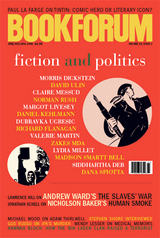
A lawyer by training and a writer by necessity, Raja Shehadeh has, since the early ’80s, argued cases of Palestinian land ownership in Israeli courts and written extensively on the legal aspects of the occupation of the West Bank and Gaza. He has also produced five volumes of prose about Palestinian life, of which Strangers in the House: Coming of Age in Occupied Palestine (2001) is the best known to American readers. Part memoir, part family chronicle, the book is an emotionally fraught intergenerational narrative about growing up in the shadow of the Palestinian Nakba of 1948.
Shehadeh is also the author of a series of “Palestinian diaries,” and Palestinian Walks: Forays into a Vanishing Landscape is the fourth installment. These books are of a different order than his other work. What they lack in narrative structure, they make up for in attention to the debris of life under occupation and the gradual deterioration of the Palestinian social and geographic landscape. The first of these, The Third Way (1982), proposes the idea of sumud, or steadfastness, as a form of nonviolent endurance, an alternative to both collaboration and political violence. His exploration of the concept continues in the second diary, The Sealed Room (1992). Written during the first Gulf War and as the first intifada was raging, the book calls for Palestinians and Israelis to step out of their “sealed rooms,” to “reach out to each other, to meet halfway and make peace.” But Shehadeh’s plea for dialogue does not imply the abandonment of sumud nor does it pacify his anger.
Between the second and third diary loom the flawed Oslo Accords of 1993 (which the author has consistently criticized, in particular for their failure to improve conditions on the ground), the beginning of the second intifada in 2000, and the Israeli invasion of the West Bank that same year. In When the Birds Stopped Singing: Life in Ramallah Under Siege (2003), Shehadeh watches a tank roll up his street and writes of darkening hope for a peaceful resolution.
Shehadeh puts the diaries’ ruminative, rambling quality to consequential use in Palestinian Walks. The book is his most ambitious yet, its scope defined by the unrelenting disfiguration of the Palestinian landscape, by dimming prospects of peace, and by the author’s own vacillation between sumud and packing up and leaving. “The biography of these hills is in many ways my own,” he writes, “the victories and failures of the struggle to save this land also mine.” Shehadeh walks the West Bank, detailing the way the settlement’s master plans have destroyed the land’s natural beauty and recounting the horrendous hardships they have inflicted on Palestinian villagers and landowners. The main argument of the Israelis, writes Shehadeh, “was that non-registered land in the West Bank was public land,” which would make the Palestinians living there “squatters” and not “rightful owners.” They have also thwarted his own outings as an avid hiker: “Palestinians built their villages to embrace the hills, not to ride them. . . . The Israelis, with an eye to security and military advantage, took the hilltops.” The “unplanned” villages “blend organically into the land,” while the Israeli settlements “are like a honeycomb, with the buildings marshaled next to each other in a rigid plan.” The network of new roads and detours, the system of military checkpoints, and the separation barrier fragment the unity of the landscape and have further damaged the lives of the villagers.
Palestinian Walks is organized around six sarhas, which the author has undertaken since the late ’70s either alone or with others. A sarha, he explains, is a walk that has a meandering quality. “Going on a sarha,” writes Shehadeh, “implies letting go. It is a drug-free high, Palestinian style.” A sarha promises the possibility—the necessity, even—of the open walk, of diversion, and Shehadeh is an experienced practitioner. Almost nothing escapes his gaze, analysis, and recollection. He depicts valleys and gorges, hills and rivers; discusses the characteristics of local vegetation and flowers; records the path of ancient roads and the new Israeli-built highways; and meets Bedouins and Israeli soldiers. Along these meanderings, he encounters a host of unreal presences and family members long since dead, notably his ancestor Abu Ameen, who built a qasr, or palace, entirely out of stone, his young bride serving as his only assistant. Shehadeh imagines their moments of deep intimacy and sorrow and describes lives frayed by expulsion and occupation.
The settlers are the silent other in Palestinian Walks, menacing specters whose watchtower dwellings impinge on the hikers. Shehadeh is a hard-nosed writer who spares no effort in criticizing the political opportunism of the PLO and the corruption brought about by the infusion of money into the Occupied Territories after the accords. He admits that, in this round, Israel has won, and Palestinians must face a protracted defeat that has come in the wake of Oslo. Yet he also holds the long view that the land is, in the end, its own master.
The sixth sarha is an imagined one and brings the author face-to-face with the other in an extended conversation that ends with a drug-induced high: “For now, he and I could sit together for a respite, for a smoke, joined temporarily by our mutual love of the land. Shots could be heard in the distance, which made us both shiver. ‘Yours or ours?’ I asked.” There is an implied seventh sarha as well, of the writing itself as a kind of wandering, a space where imaginary flight, physical description, ancestral narrative, and critique all intersect. With its mention, Shehadeh brings his walk to an end, returning to the bedrock truth of the artist: The landscape has been systematically transformed into an ugly reality; the writer has no choice but to stay and write.
Taline Voskeritchian’s writing has appeared in the London Review of Books, The Nation, and elsewhere.
